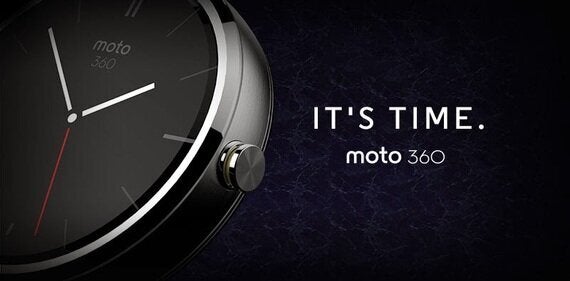With Samsung unveiling the Galaxy Gear S, the Moto 360 getting a warm if unenthusiastic reception and Apple poised to announce their first foray into wearables, smartwatches have truly become a thing. But not a thing with any discernible purpose yet.

Once you get past the novelty of sending a text or making a call by muttering into your wrist, the smartwatch is essentially just a glorified remote control for your phone's basic features. This wouldn't be a problem were it not that they're typically being sold at a price to rival the handset it's paired to. If I spend £200 on a Moto 360 smartwatch for my £130 Moto G, I'd like it to do more than tell me things it would take three extra seconds to find on my phone. Especially since having to brave the elements on a daily basis, rather than being stowed in a pocket, means it's likely to get damaged, break or at least suffer some scratches before long.
Granted, some non-smart watches have exorbitant price tags as well when they're a fashion accessory, but smartwatches shouldn't try to be. Rather than chase fruitlessly after shifting and subjective ideas of what's stylish, product designers should try to make wearables as discreet, understated and inconspicuous as possible. Not only will this help avoid becoming a target for muggers, it'll make wearable tech a viable purchase for those who don't want to stand out. Smartwatches will have greater mainstream appeal if, at a glance, they're barely distinguishable from a normal watch (soon to be called "feature watches" as per tradition).
Until a smartwatch that does everything a smartphone can independently (and well) comes along, or someone finds a use for them that couldn't work on a handset, few consumers can honestly justify the expense. But until third-party developers can see the benefit of spending time and energy creating smartwatch apps, which requires a strong existing user base, that killer feature will remain elusive. So tech companies have to get smartwatches in the hands (figuratively speaking) of users some other way.
The sudden surge in tablet computer usage over the last twelve months can find its origin in retailers like Amazon, Tesco and Argos selling loss-leader products. Having tempted customers to take a punt on their cut-price device, making a loss in the process, they lock users into their platform and proprietary services. Through these they can sell content for the tablet, like films and games, to turn a bigger profit. For years, Google have been selling loss-leader Nexus phones and tablets as a means to increase the number of Android users, collect more data for targeted advertising and to keep developers interested in building apps for their platform.
This could be the way forward for smartwatches too, selling them at a price low enough to get users invested in a wrist-worn gadget for checking your phone. Once a critical mass of users has been reached to tempt developers and the apps start rolling in, users can pay to get those features or upgrade to a smartwatch that supports them. As the usefulness and popularity of the form factor increases, manufacturers can start selling premium 'designer' watches that had time and money put into its appearance that the original devices didn't.
Low-cost 'feature' smartwatches, supporting only functions baked in by the manufacturer and lacking flashy designs, may be the push needed to help smartwatches go mainstream. Without it, the market might remain limp-wristed for a long time to come.